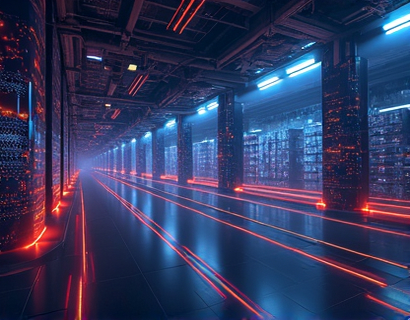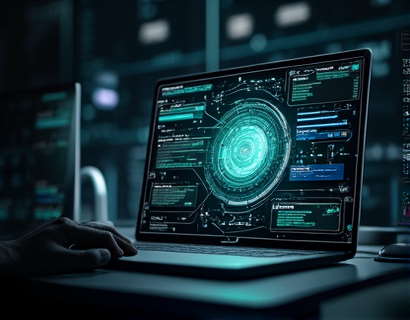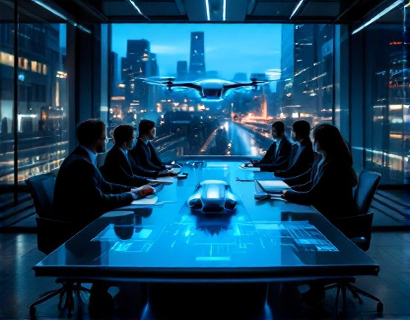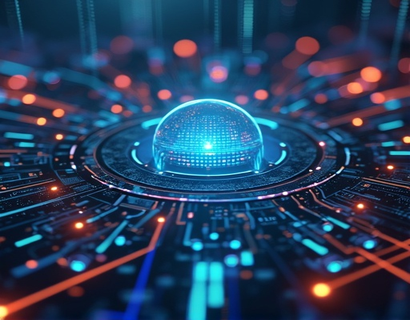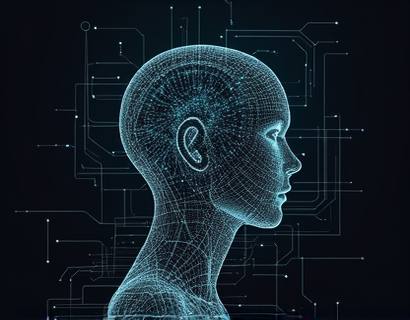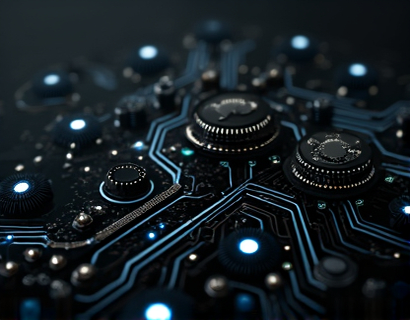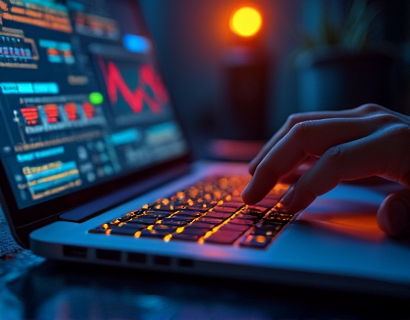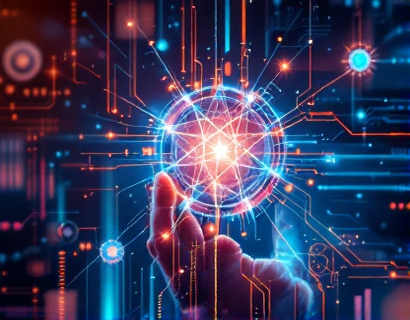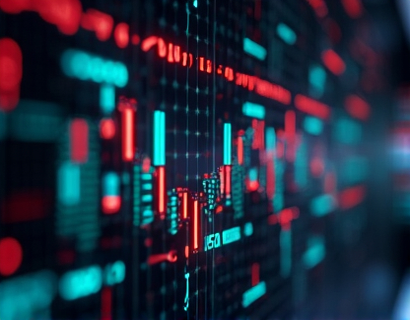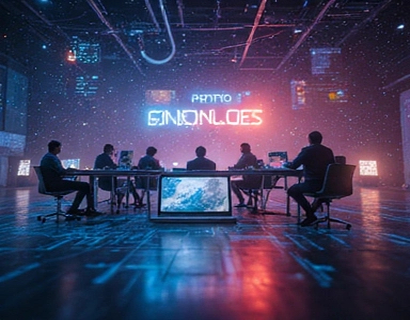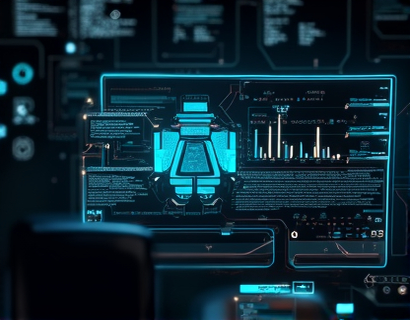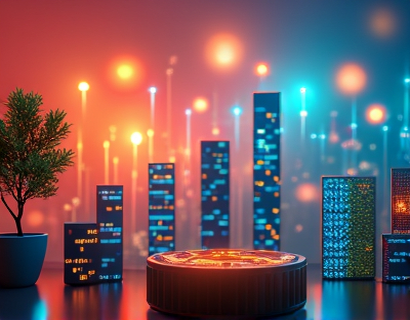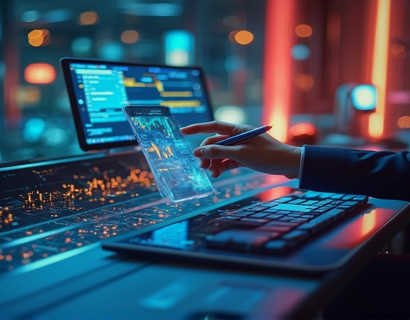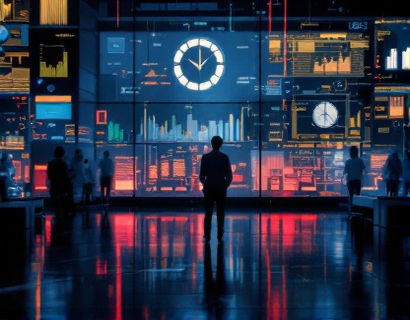Decentralized Innovation: Leveraging AI and Crypto for Next-Gen Digital Transformation
The intersection of artificial intelligence (AI) and cryptocurrency is giving rise to a new era of digital transformation, one that is fundamentally altering the way we interact online and conduct business. This transformative power lies in the creation of decentralized applications (dApps) and services that harness the strengths of both technologies to offer unprecedented levels of security, transparency, and user empowerment. In this article, we will explore how the fusion of AI and crypto is paving the way for a more decentralized and innovative digital ecosystem, benefiting tech-savvy individuals and businesses alike.
The traditional centralized models of the internet have been dominated by a few large corporations, often leading to issues such as data breaches, censorship, and lack of user control over personal data. The emergence of blockchain technology has introduced a decentralized alternative, where data and applications are distributed across a network of nodes rather than controlled by a single entity. When AI is integrated into this decentralized framework, the potential for innovation becomes immense.
Understanding Decentralized Applications
Decentralized applications, or dApps, are software applications that run on a blockchain or a decentralized network, rather than on a central server. These applications are governed by smart contracts, which are self-executing contracts with the terms directly written into code. This ensures that the application operates as intended without the need for intermediaries, reducing the risk of manipulation and increasing trust among users.
One of the key features of dApps is their ability to leverage AI for enhanced functionality. For instance, AI can be used to analyze vast amounts of data stored on the blockchain, providing insights and predictions that can inform decision-making processes. This synergy between AI and decentralization not only improves the efficiency of dApps but also enhances their capabilities, making them more robust and user-friendly.
AI in the Decentralized World
AI technologies, such as machine learning and natural language processing, are being integrated into decentralized systems to create smarter and more autonomous applications. For example, AI-driven chatbots can operate on a decentralized platform, providing customer support without the need for a central server. These chatbots can learn from user interactions, improving their responses over time and offering a more personalized experience.
Another area where AI shines in the decentralized space is in data analysis and pattern recognition. Blockchain networks generate massive amounts of data, and AI algorithms can process this data to identify trends, detect anomalies, and optimize network performance. This not only enhances the efficiency of the blockchain but also opens up new possibilities for data-driven services and applications.
Enhanced Security and Privacy
Security and privacy are paramount in the digital age, and the combination of AI and decentralization offers significant improvements in these areas. Blockchain's inherent security features, such as cryptographic hashing and consensus mechanisms, provide a robust foundation for protecting data. AI can further enhance this security by detecting and mitigating potential threats in real-time.
For instance, AI-powered security systems can monitor blockchain networks for unusual activity, identifying potential attacks or vulnerabilities before they can be exploited. Additionally, AI can be used to develop more sophisticated encryption methods, ensuring that user data remains confidential and secure. This dual approach of decentralization and AI creates a multi-layered security framework that is far more resilient than traditional centralized systems.
User Empowerment and Control
One of the most significant advantages of decentralized applications is the empowerment of users. In a decentralized ecosystem, users have full control over their data and digital identities. They can choose how and with whom to share their information, without relying on intermediaries. This shift in control not only enhances user privacy but also fosters a more democratic and equitable digital environment.
AI can further enhance user empowerment by providing personalized experiences and insights. For example, AI-driven recommendation systems can suggest relevant content, services, or products based on a user's preferences and behavior. These recommendations can be generated on a decentralized platform, ensuring that the data remains under the user's control and is not exploited by centralized entities.
Economic Incentives and Tokenization
The integration of AI and cryptocurrency in decentralized applications also introduces new economic models, particularly through the use of tokens. Tokens can serve as a medium of exchange, a store of value, or a means of incentivizing participation in a decentralized network. AI can optimize the distribution and management of these tokens, ensuring fair and efficient economic incentives.
For instance, AI algorithms can analyze user contributions to a decentralized platform and allocate tokens accordingly, rewarding those who add the most value. This tokenization mechanism not only motivates users to engage more actively but also creates a self-sustaining ecosystem where value is generated and distributed based on merit.
Challenges and Considerations
While the potential of AI and decentralized technologies is vast, there are several challenges that need to be addressed to fully realize their benefits. One of the primary challenges is the technical complexity involved in integrating AI with blockchain systems. Developers must possess a deep understanding of both technologies to create seamless and efficient applications.
Another challenge is the regulatory landscape. As decentralized applications and cryptocurrencies continue to evolve, governments and regulatory bodies are grappling with how to govern these new forms of digital interaction. Ensuring compliance while maintaining the decentralized nature of these applications is a delicate balance that requires careful consideration.
Future Prospects
The future of decentralized innovation, powered by AI and cryptocurrency, is promising and full of potential. As technology continues to advance, we can expect to see more sophisticated and user-friendly dApps that leverage AI for a wide range of applications, from finance and healthcare to education and entertainment.
The convergence of these technologies will not only transform how we interact online but also redefine the fundamental principles of the digital economy. By fostering a more decentralized, secure, and user-centric environment, we can unlock new possibilities for innovation and growth, benefiting individuals and communities around the world.
In conclusion, the integration of AI and cryptocurrency in decentralized applications represents a significant leap forward in digital transformation. By harnessing the strengths of both technologies, we can create a more equitable, secure, and efficient digital ecosystem. As we continue to explore and develop these cutting-edge solutions, the future of online engagement and digital interaction looks brighter than ever.




